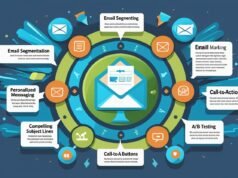Creating an AI chatbot that understands your business and speaks to your customers effectively requires more than just setting up a basic system. The key lies in training your chatbot with your own data to create personalised, accurate responses that reflect your brand’s voice and expertise.
Training your chatbot with custom data transforms it from a generic tool into a knowledgeable assistant that can handle specific queries about your products, services, and industry. This personalization is crucial because well-trained AI chatbots improve website engagement time by providing relevant, immediate assistance that keeps visitors on your site longer.
Preparing Your Data for Training
Before you begin training your chatbot, you need to gather and organise your data effectively. Start by collecting relevant information from various sources within your organisation.
Your existing customer service logs provide valuable insights into common questions and concerns. These interactions reveal the language your customers use and the problems they face most frequently. FAQ documents, product manuals, and knowledge base articles also serve as excellent training materials.
Website content, including blog posts, product descriptions, and service pages, helps your chatbot understand your offerings comprehensively. Don’t overlook internal documentation such as troubleshooting guides and process documents that can help your chatbot provide more detailed assistance.
Structuring Your Training Data
Once you’ve collected your data, proper structuring is essential for effective training. Organise your information into clear categories that reflect different types of customer queries.
Create intent-response pairs where each intent represents what the customer wants to achieve, and the response provides the appropriate answer. For example, if customers frequently ask about delivery times, create multiple variations of this question paired with your standard delivery information.
Include context and variations in your training data. Customers might ask the same question in different ways, so provide multiple examples of how they might phrase their queries. This helps your chatbot recognise and respond to various communication styles.
Training Process and Best Practices
The actual training process involves feeding your structured data into your chosen chatbot platform. Most modern chatbot platforms offer user-friendly interfaces for uploading training data and managing the learning process.
Start with a core set of high-quality training examples rather than overwhelming the system with everything at once. Focus on the most common customer queries and gradually expand your dataset as you identify gaps in your chatbot’s knowledge.
Test your chatbot regularly during the training process. Ask it questions using different phrasings and contexts to ensure it provides accurate, helpful responses. This iterative approach helps you identify areas where additional training data is needed.
Ongoing Optimisation and Updates
Training your chatbot isn’t a one-time task. Continuous improvement ensures your chatbot remains effective and current with your business needs.
Monitor your chatbot’s performance by reviewing conversation logs and identifying queries it struggles to answer. These gaps indicate where you need additional training data or where your existing data might need refinement.
Regular updates to your training data keep your chatbot current with new products, services, or policy changes. Schedule periodic reviews to ensure your chatbot’s responses remain accurate and aligned with your current business offerings.
Measuring Success and ROI
Track key metrics to understand how well your trained chatbot is performing. Monitor response accuracy, customer satisfaction scores, and resolution rates to gauge effectiveness.
Pay attention to engagement metrics such as conversation length and user retention. A well-trained chatbot should keep users engaged while efficiently addressing their needs. If users are leaving conversations early or expressing frustration, your training data may need adjustment.
Take Your Chatbot to the Next Level
Training an AI chatbot with your own data requires careful preparation, structured implementation, and ongoing optimisation. By following these steps, you’ll create a chatbot that truly understands your business and provides valuable assistance to your customers.
Remember that effective chatbot training is an iterative process. Start with your most important customer queries, test thoroughly, and continuously refine your approach based on real-world performance. With proper training, your chatbot will become a valuable asset that enhances customer experience while supporting your business goals.







